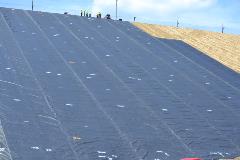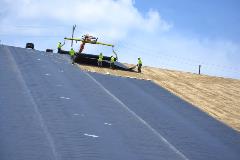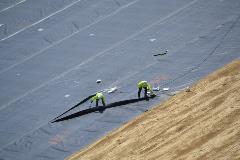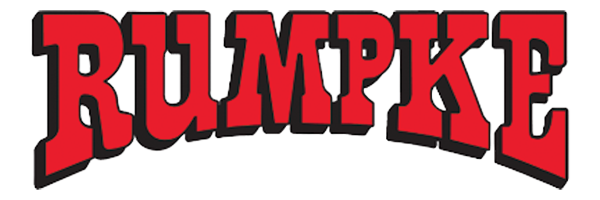They're Doing What to the Hole in the Ground?
There is a big difference between a dump and a landfill. Landfills are designed to protect our environment from the trash, and right now Rumpke is in the process of constructing the highly engineered structure that is a landfill cell to house the region’s waste.
For the past 8 years , Rumpke has been excavating a hole in the ground that is more than 150 feet deep and 14 acres wide. This section is called a cell, and it’s where Rumpke will be putting our trash in the very near future.
1
By the end of the summer, this cell will start to be filled with the trash from residents and businesses within a 60 mile radius of Rumpke’s Colerain Township Landfill. However, before we put trash into the cell a liner system is put in place to protect the environment surrounding the cell.
Currently, we are in the process of putting down the first layer of the cell: clay. 2
Three feet of re-compacted clay is placed on the side slopes and the floor of the cell. The clay is very thick and very dense, making it hard for liquid to penetrate. Our design will keep everything placed in the landfill, inside the structure and away from groundwater and soil. However, before the clay can be put down a series of test are conducted on the clay. The clay is tested by a third party firm to ensure specific moisture and compaction is being maintained. Rocks above a certain size are also picked out of the clay before final approval. 3
Eventually, the entire cell will be covered in the clay liner, which can take a few months. Once, it is covered we can move on to the second layer on the liner system we put in place: high-density polyethylene.
In Colerain Township, Rumpke is currently prepping a 14-acre section of its property for the disposal of Greater Cincinnati’s waste. As we learned in “They’re doing what to the hole in the ground? Part One: Clay,” there is a difference between a landfill and a dump. At Rumpke’s Colerain location, we are currently building a new landfill cell. However, before that cell can be filled with trash a liner system is put down to keep the surrounding environment safe. In part one you were shown the first layer of the liner, clay.
Now that the clay liner is complete, a second made of high-density polyethylene (HDPE) is being installed.
High-density polyethylene is a fancy word for heavy duty plastic and is made out of the same material your detergent bottles come in. HDPE comes in large sheets like carpet and is laid out in small sections. Each liner is 60 mil thick and comes with a pre-molded micro spike finish for better traction when working or walking on the surface during construction.
When the sections are all added together a machine called a mouse, because it looks like a computer mouse, seals each layer to the ones surrounding it creating an impenetrable layer. The liners are double welded together with heat on the seams to seal them. Before being put down, each weld is pressure tested with air to ensure it meets the design specifications of the cell.
Like with the clay liner, several tests must be performed to the plastic liner to ensure its effectiveness.
Watch for more updates this summer as we continue to build this highly-engineered structure.
About the Author: Jessica Darling is the summer 2016 corporate communications intern at Rumpke.
Landfills are highly engineered structures designed to protect the environment from society’s trash. Over the course of the last few months, we’ve been sharing information on how a landfill is constructed as Rumpke prepares a section of its property for trash disposal.
We’ve already skillfully placed clay and a high density polyethylene (HDPE) liner in the 14-acre section of our site, and recently we’ve installed our third protective layer – a cushion layer.
Cushion Layer
The cushion layer is a geo-textile, which is a felt like material that is designed to protect the HDPE liner.
Similar to how the HDPE was deployed, the geotextile is rolled out in sections. The sections are then sewn together with a modified sewing machine.
cushion layer 2
With the cushion layer now in place, we are nearing the end of our project. Watch for our fourth and final blog about landfill construction in the coming weeks.
